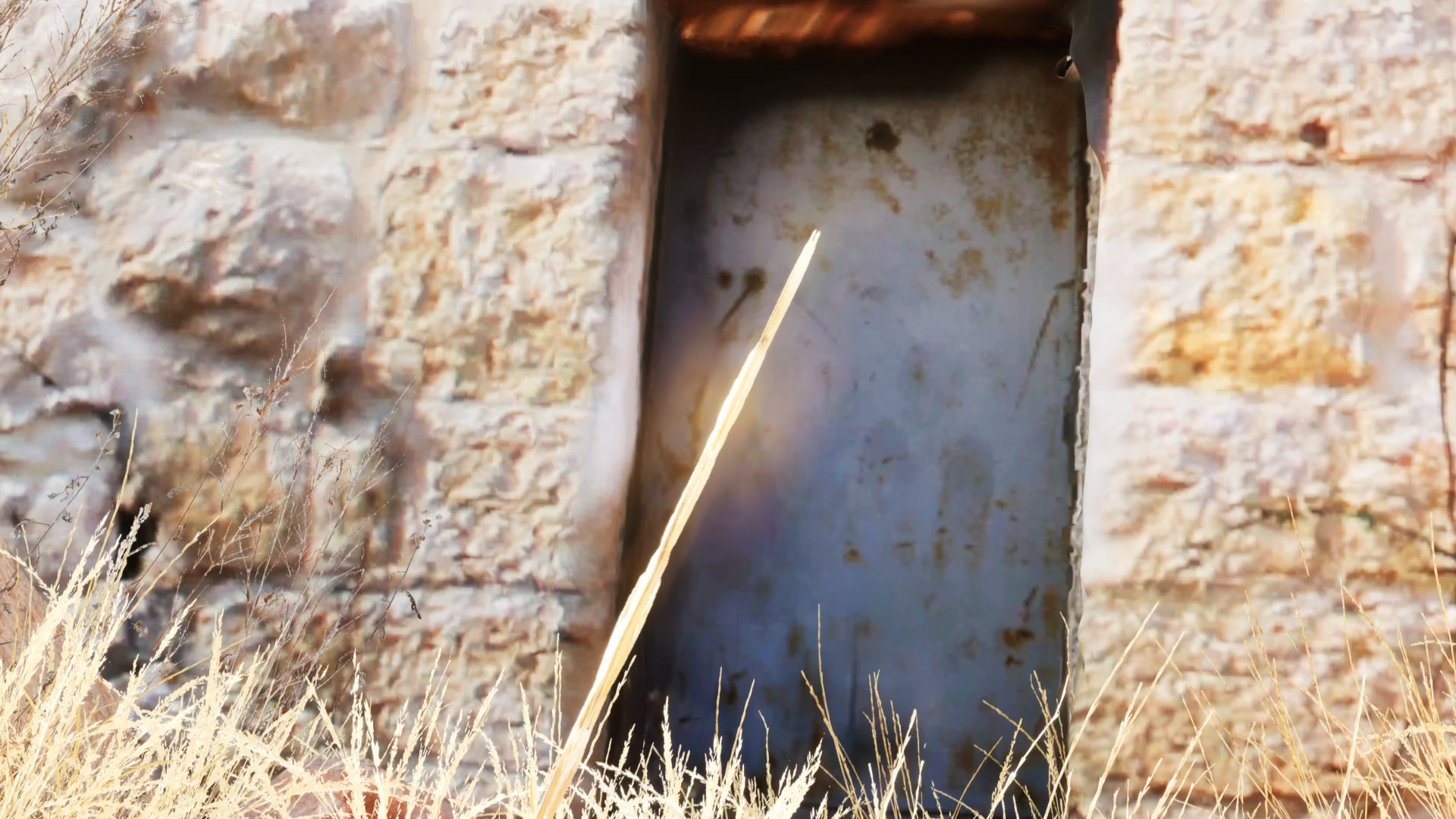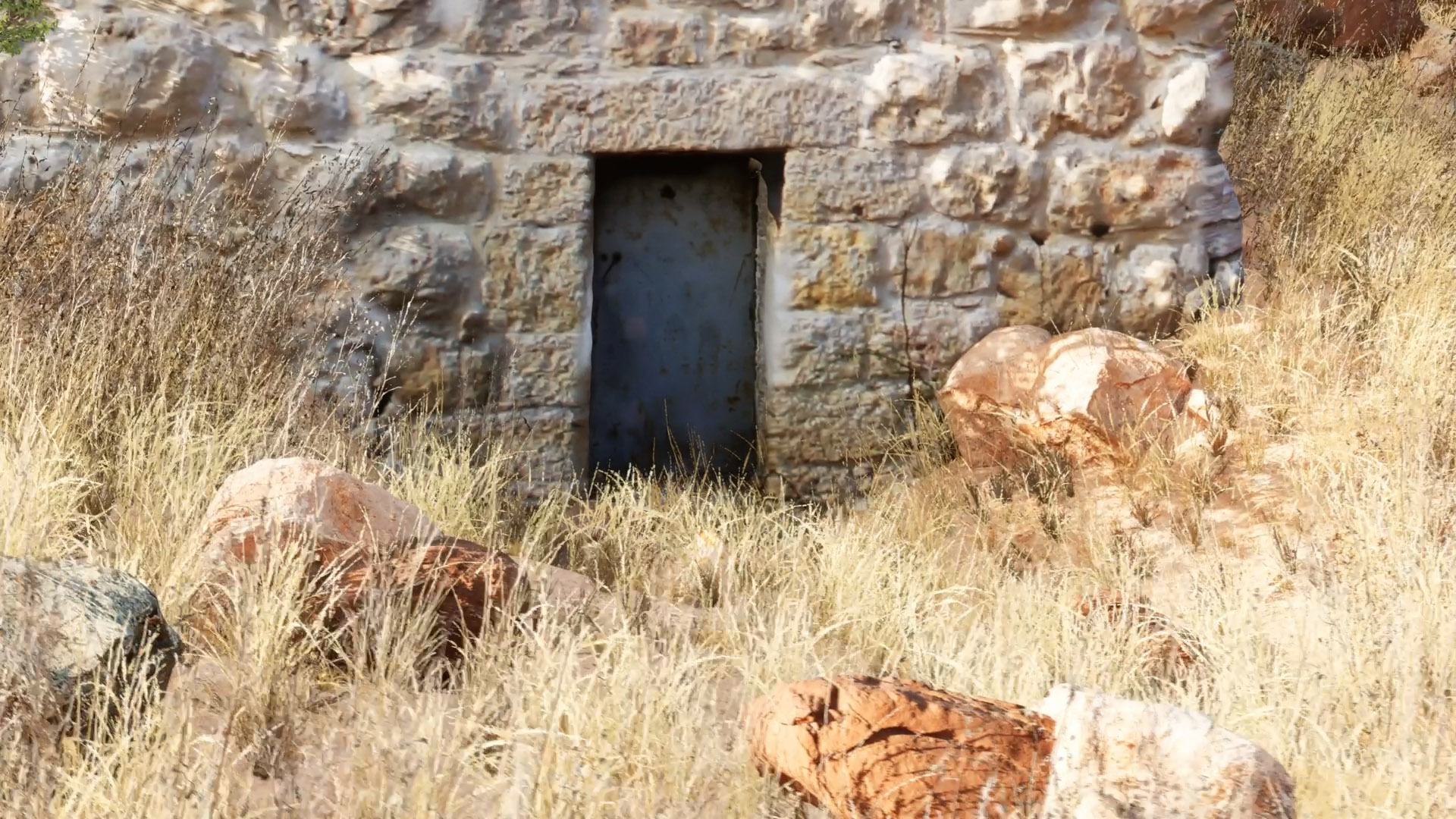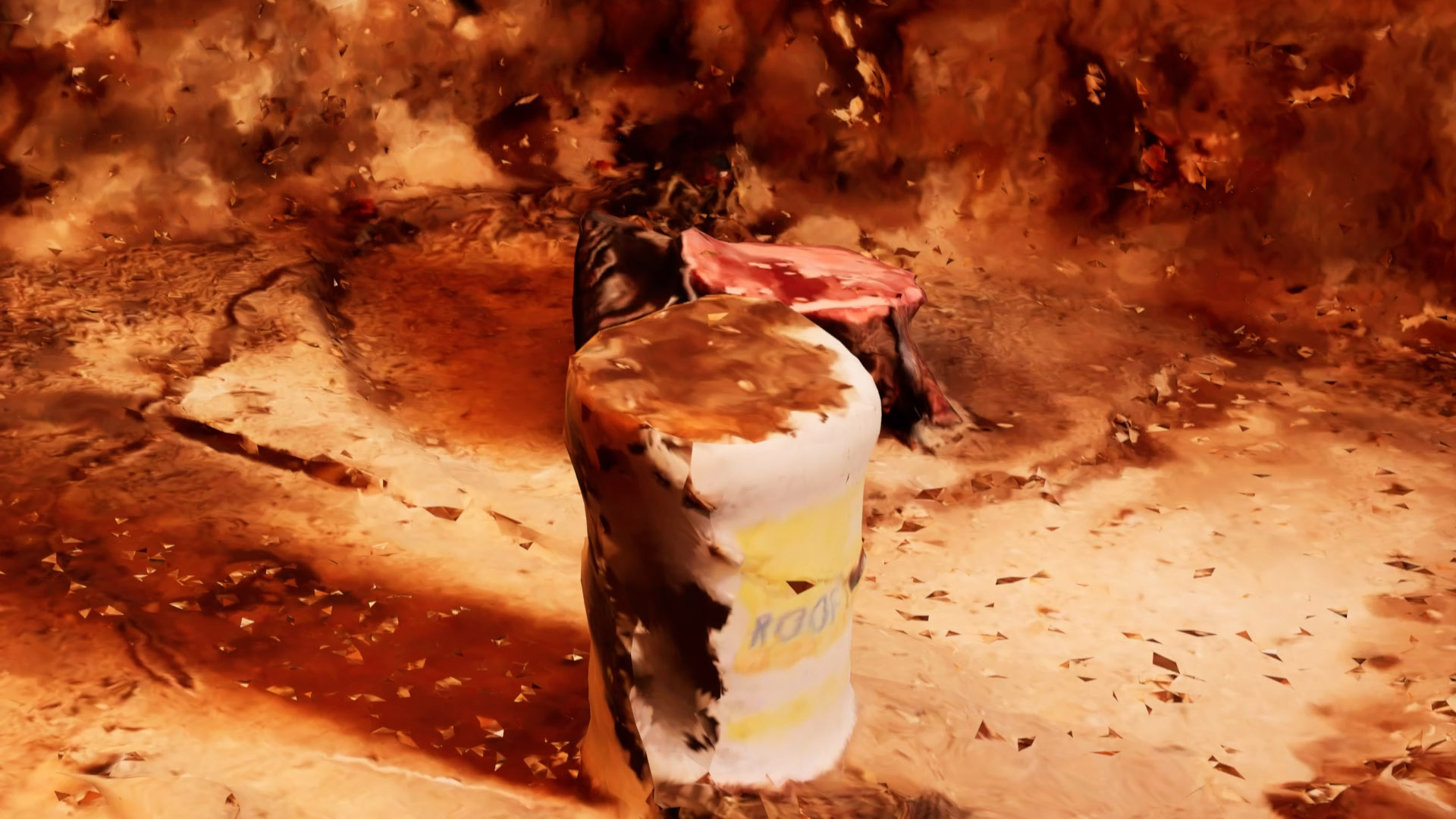Green, how I want you green.
Green wind. Green branches.
The ship out on the sea
and the horse on the mountain.
–Federico García Lorca
This series of films departs from a conversation on landscape in the poetry of Federico Garcia Lorca and Mahmoud Darwish. It posits landscape as a place of connection as well as a reflection on memory, distance, and exile. The figure of the olive tree connects a wide Mediterranean region through millennia of parallel agricultural ritual and ecological coexistence. The olive branch is known as a symbol of peace while residing in a region that has been cut apart and divided.
Trees are a living archive of the land. Olive trees can live up to thousands of years, making them a stable and familiar element for generations of their neighbours. The olive branch is a symbol of peace whose stable grip has been wrested from the soil. They are also targets in the ongoing catastrophe in Palestine that is impossible not to speak of.
***
Palestinian diasporic communities rely on the memories of relatives and ancestors to hold on to roots which were violently severed in 1948. Scattered throughout the world, the grandchildren of the displaced rely on memory and oral history to retain their connection to a prohibited landscape. Across continents and hemispheres, Francisca Khamis grew up in Chile – among the largest Palestinian diaspora outside of the Arab world – hearing stories about the fertility of the valley of Al Makhrour and the country house where her ancestors gathered to harvest fruit each summer in a small place full of the laughter of children and countless fragrances. Her video piece “31°42’49.5″N 35°10’13.9″E” comments on distance, memory, and the efforts to preserve community and heritage despite vast transcontinental swathes of this earth and militarised borders that create physical and psychological separation.
In the film, she reconstructs the site using 3D modelling technology based on recorded interviews and recollections of her relatives who describe the setting in distinctive Chilean Spanish. Situated near the town of Beit Jala, the valley is known for its immense biodiversity and fertile soil. A voiceover recalls how full of fruit the trees used to be. She asks her family about the location of the trees and the colour of the sky, modelling the site to fit their description. Olive trees bend under the wind in the realistic digital render. Al Makhrour valley is situated in the West Bank’s Area C.[1] This zone is under complete control of the Israeli military and is rapidly being built up with illegal settlements and outposts. It is off-limits and restricted for Palestinians. Although 300,000 Palestinians live in Area C, this is where the majority of illegal Israeli settlements are built and 30% of the territory is dedicated as a “firing zone” where military drills are carried out.[2] Construction in the valley is heavily restricted, including repairs to existing structures such as the Khamis’ family’s cottage, yet, settlements and roads are actively built by Israeli settlers and companies.[3]
Francisca Khamis Giacoman is a visual artist and designer based in Amsterdam. Through performances, installations, and audiovisual works, she recalls stories of migration and unfolds them at the boundaries of fiction and materiality. Her research touches upon language, knowledge production, and accessibility through narrative circulation, focusing on different ways of (re)membering ourselves and others. Actively involved in self-organized projects, Francisca co-founded the “Museo del Perro * Honden Museum” in Amsterdam (2023), “Ediciones Rocas Shop” Cooperative Publishing House in Santiago (2017-22), C.I.A (Centro de Investigación Artístico) in Santiago (2013-15) and Espacio Estamos Bien, an art cooperative in Amsterdam that curates gatherings, publications, and exhibitions. Currently, she leads the development of a support initiative for non-European students at the Sandberg Instituut and Gerrit Rietveld Academie. She has exhibited at Rozenstraat, Amsterdam; Extracity, Antwerp; Het Nieuwe Instituut, Rotterdam; Kunstverein, Amsterdam; PuntWG, Amsterdam; Stroom, The Hague; and Stadium, Berlin; Bibliotek, London; & Gold+ Beton, Cologne, among others.
Àngels Miralda (1990) is an independent writer and curator. Her recent exhibitions have taken place at Something Else III (Cairo Biennale); Garage Art Space (Nicosia); Radius CCA (Delft), P////AKT (Amsterdam), Tallinn Art Hall (Estonia), MGLC – International Centre for Graphic Arts (Ljubljana), De Appel (Amsterdam), Galerija Miroslav Kraljevic (Municipal Gallery of Zagreb), the Museum of Contemporary Art of Chile (Santiago), Museu de Angra do Heroísmo (Terceira – Azores), and the Latvian Centre for Contemporary Art (Riga). Miralda wrote for Artforum from 2019-2023 and regularly publishes with Terremoto (Mexico City), A*Desk (Barcelona), Arts of the Working Class (Berlin), and is editor-in-chief of Collecteurs (New York).
CREDITS:
Text and editing by Francisca Khamis Giacoman
Voices: Labibe Khamis, Eduardo Khamis B., Constanza Khamis, Eduardo Khamis, Andrés Khamis, Francisca Khamis, Siwar Kraitem.
CG environment and modeling by Finn Wagner
Sound by Constanza Castagnet
Made with the support of Het Nieuwe Instituut, NL
[1] B’tselem, “The al-Makhrour Area: damage to businesses, leisure, and agriculture,” (https://www.btselem.org/planning_and_building/al_makhrur)
[2] Anera, “What are area a, b, and, c in the West Bank?” (https://www.anera.org/what-are-area-a-area-b-and-area-c-in-the-west-bank/)
[3] United Nations Office for the Coordination of Humanitarian Affairs, “Recent Developments Add Pressure on Bethlehem’s Rural Area” (https://www.ochaopt.org/content/recent-developments-add-pressure-bethlehem-s-rural-area)
Francisca Khamis Giacoman, 31°42’49.5″N 35°10’13.9″E, (2023), HD, Color, Sound, 10:45 min
Francisca Khamis Giacoman, 31°42’49.5″N 35°10’13.9″E, (2023), HD, Color, Sound, 10:45 min
Francisca Khamis Giacoman, 31°42’49.5″N 35°10’13.9″E, (2023), HD, Color, Sound, 10:45 min
Francisca Khamis Giacoman, 31°42’49.5″N 35°10’13.9″E, (2023), HD, Color, Sound, 10:45 min
Francisca Khamis Giacoman, 31°42’49.5″N 35°10’13.9″E, (2023), HD, Color, Sound, 10:45 min





